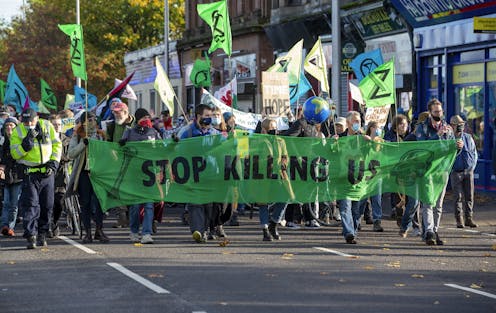it's half-time at the crucial Glasgow climate change summit – and here's the score
- Written by Wesley Morgan, Research Fellow, Griffith Asia Institute and Climate Council researcher, Griffith University
 EPA
EPAThe first week of the United Nations climate talks in Glasgow are drawing to a close. While there’s still a way to go, progress so far gives some hope the Paris climate agreement struck six years ago is working.
Major powers brought significant commitments to cut emissions this decade and pledged to shift toward net-zero emissions. New...
Read more: it's half-time at the crucial Glasgow climate change summit – and here's the score

















